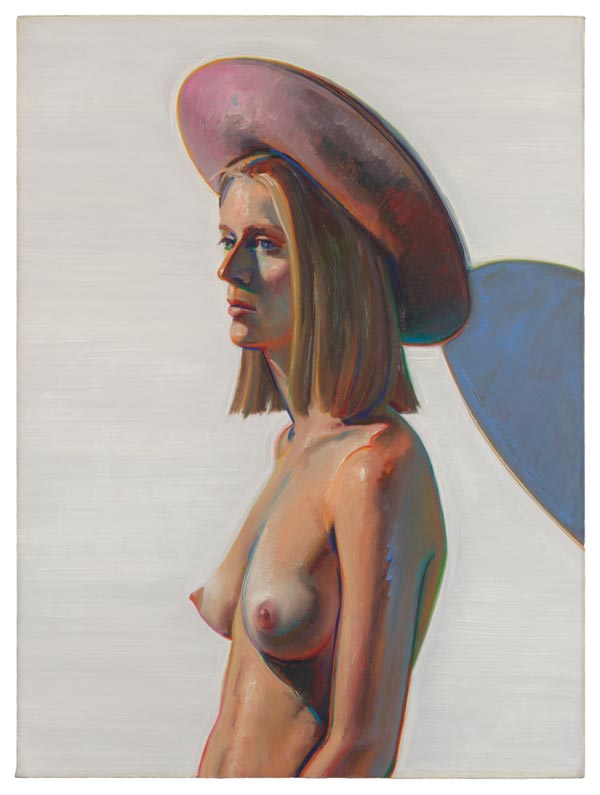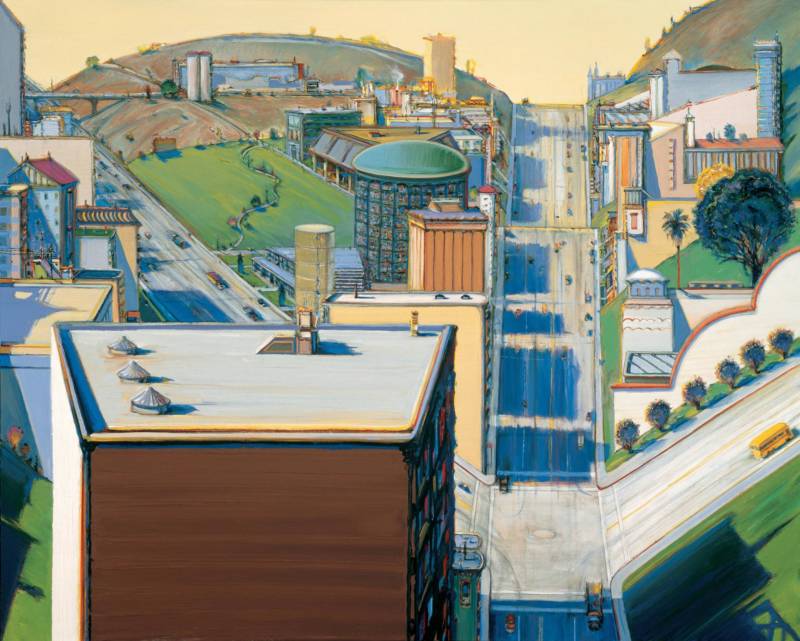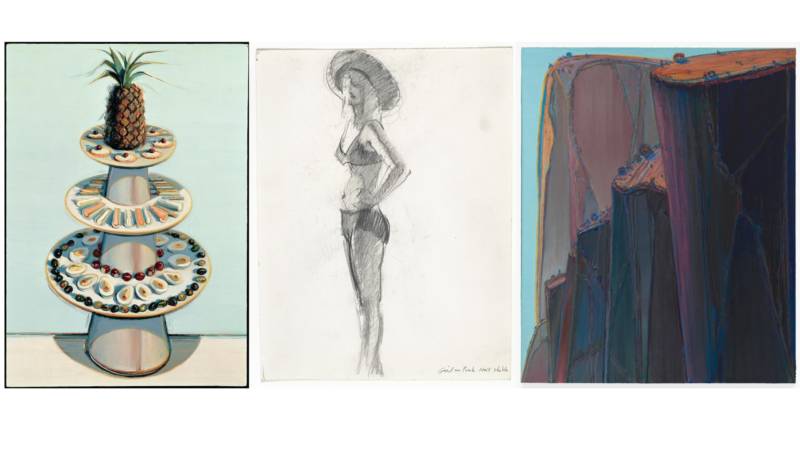It was one of those rainy winter Saturdays at SFMOMA, where the storm blows pedestrians through the revolving doors and into the lobby, their cold shoes tracking large wet leaves across the floor. Even to those without money for admission, the museum’s coffee kiosk and gift shop at least promised respite from the downpour—and, up the stairs near the membership desk, the entrance to Wayne Thiebaud: Paintings and Drawings, a two-room exhibition of the Bay Area artist’s work.
Between lounge furniture and iPhone charging stations, all fully occupied, sat a display of Thiebaud’s tools: brushes, paint, the repurposed tennis ball lids he uses as palettes. A 1985 photo of Thiebaud in a striped bowtie, sitting in his San Francisco studio, caught the attention of some teenage girls. “Oh my God, have you watched Bob Ross?” one of them asked the others. “My sister, like, loves him.”

In the next room began a selection from 50 years of Thiebaud’s work, all from the museum’s own holdings. Thiebaud himself began visiting SFMOMA in 1942, a full 31 years before painting Girl With Pink Hat (1973), a magnetic portrait bathed in sun, skin, and Thiebaud’s signature sense of color.
Adjacent to Girl With Pink Hat, six sketches showed various other approaches initially considered for the girl, before Thiebaud settled on an emotionless expression, a topless pose, and a slight angle to her body accenting the curves of her breasts. On Saturday, parking himself in front of the painting, a balding, heavy-set man in a Chicago Bears sweatshirt spent two minutes taking pictures with his phone, trying to get the perfect shot.
The next room contained some of Thiebaud’s cityscapes, including Sunset Streets (1985), which attracted the attention of a twentysomething man in oversize jeans and slick hair. “That’s trippy!” he exclaimed, then called over his girlfriend to explain to her exactly why. “See, it’s like three-dimension, with another dimension at the same time,” he instructed. “I used to do stuff like that. Back when I was good at drawing.”

The girlfriend wandered away. The afternoon was turning into evening. A family with two young boys walked in, lured by Confections (1962), a bright-hued Thiebaud painting of dessert, one of three such works in the exhibition. The mother, clearly the captain of what seemed to be an exhausted ship, tried to stoke their interest.



